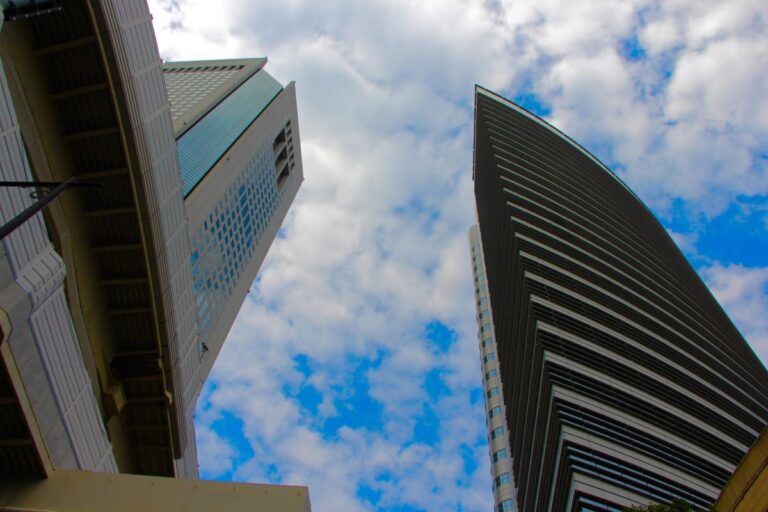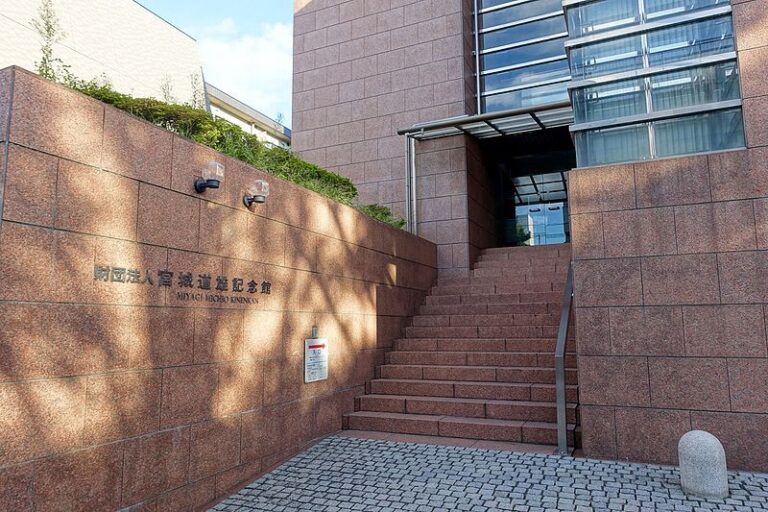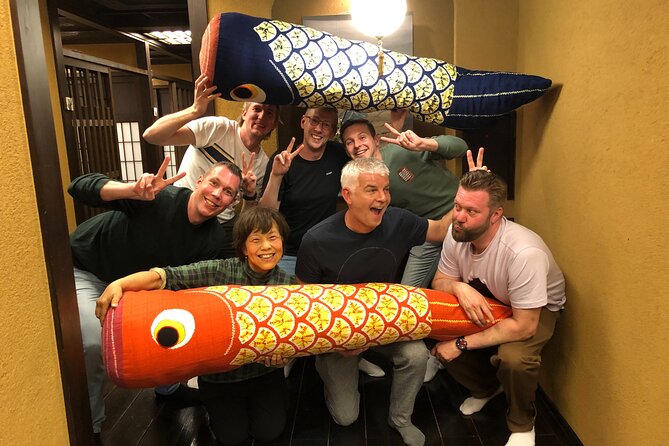Golden Gai is a small district located in Kabukicho, Shinjuku, Tokyo, Japan. It is composed of six narrow alleys, connected by even narrower passageways, which are about wide enough for a single person to pass through.
Despite its small size, Golden Gai is a popular spot for locals and tourists alike, known for its unique and vibrant nightlife scene.

8 Key Takeaways
If you’re planning to visit Golden Gai, here are 8 key takeaways that you should keep in mind:
- A small area: With only six alleys and around 200 bars, it’s easy to explore Golden Gai in one night. But be prepared to squeeze through narrow alleyways and staircases.
- Not for everyone: The bars are small and often crowded, and many are reserved for regular customers. If you’re looking for a quiet night out or a place to sit down, Golden Gai might not be the best choice.
- Not cheap: Drinks in Golden Gai can be expensive, with cover charges and minimum charges at many bars. Be prepared to spend some money if you’re planning to drink there.
- Unique atmosphere: The bars are small and often decorated with memorabilia and antiques.
- Great place to meet people: With so many small bars in one area, it’s easy to strike up a conversation with other patrons and bar owners. Many bars are also welcoming to foreigners.
- Open late: Most bars in Golden Gai stay open until the early hours of the morning, making it a great place to visit after a night out or for a late-night drink.
- Golden Gai is changing: With the increasing popularity of Golden Gai, some bars are becoming more tourist-oriented and losing their unique character. However, there are still many hidden gems to discover in the area.
The area is packed with tiny, slightly ramshackle but buzzing bars, restaurants, and shops. The number of punters who can squeeze into each establishment ranges from about five to thirty.

It doesn’t contain any grand buildings or monuments, but it is simply a tiny fragment of old Tokyo that has miraculously survived, albeit hemmed in and dwarfed by high-rise developments all around. It allows a glimpse of what the city was like in the recent past – a unique record of a way of life that has nearly been bulldozed off the map.
Golden Gai is located between Hanazono Shrine and Shinjuku City Office, and it’s only 10 minutes on foot from the east exit of the Shinjuku Station. If you’re walking east down Yasukuni-dōri, past the Don Quijote, look for the lantern-lit lane on the left, just past the Mr. Donut. The area is easily accessible, and visitors can enjoy bar-hopping and exploring the narrow alleys, each with its own unique atmosphere and charm.

One of the most unique aspects of Golden Gai is the close-knit community of bar owners and regulars. Many of the bars are run by a single owner who serves as both bartender and host, creating a cozy and intimate atmosphere for patrons. Visitors to Golden Gai can expect to meet friendly locals and fellow travelers, making it a great spot for solo travelers or those looking to make new friends.
History

Golden Gai’s history stretches back centuries. In the Edo period (1603-1868), this area was a temple town built around the Shinjuku Kannon Temple. However, it was during the post-war period that Golden Gai started to take shape as a drinking district.
After the end of the war when it opened as the black market Shinjuku Market on the east side of Shinjuku Station.
However, the area has regained its liveliness and continues to exist as a place that retains the atmosphere of the 1950s, with long-established establishments as well as the younger generation opening shops with innovative concepts.
Originally, the area was a black market in the 1950s and was famous for prostitution until the 1960s. It was during this time that the area began to transform into a drinking hot spot. The tiny alleys and streets of Golden Gai became home to tiny, slightly ramshackle but buzzing bars that could only fit a handful of people at a time.

Later, the area was transformed into an area where cultural figures and celebrities such as writers, poets, cartoonists, and film and theater artists spent their time in discussions, and furthermore, during the peak of the bubble economy, the area showed a decline due to land acquisition.
Despite the fact that the twentieth century was not kind to Tokyo’s architectural heritage, Golden Gai managed to survive. Most buildings that didn’t fall down in the great earthquake of 1923 or burn down during wartime air raids became a victim of Japan’s “economic miracle” of the 1960s and 1970s. However, Golden Gai remained relatively untouched, and today it is a unique and fascinating glimpse into Tokyo’s past.
Location

Golden Gai is located in the heart of Tokyo’s Shinjuku district, one of the busiest and most vibrant areas of the city.
The neighborhood is easily accessible and is situated just a 10-minute walk from the east exit of Shinjuku Station, making it a convenient place to grab a drink.
The area comprises six narrow alleys, each lined with over 200 tiny bars, restaurants, and shops. Despite its central location, Golden Gai has managed to retain its old-world charm, with many of the buildings dating back to the 1950s.

The area is a popular destination for those looking to experience the traditional side of Tokyo’s nightlife.
The neighborhood is also within striking distance of some of Tokyo’s top-rated restaurants, including 12 three-Michelin-starred establishments.
If you’re looking to visit Golden Gai, the easiest way to get there is by foot. Simply head east down Yasukuni-dōri, past the Don Quijote, and look for the lantern-lit lane on the left, just past the Mr. Donut. Golden Gai is right near Shintō shrine, Hanazono-jinja.
Layout
It is made up of six narrow alleys that are packed with almost two hundred tiny bars and restaurants. The alleys are lined with small, three-story buildings that are tightly packed together, creating a unique and intimate atmosphere.
Bars and Restaurants

The bars and restaurants vary in size, but most of them are tiny and can only accommodate a few customers at a time. Some of the bars are so small that they can only fit a few people standing at the counter. Each bar and restaurant has its own unique atmosphere and style, ranging from traditional Japanese to modern and trendy.
Most of the bars specialize in a particular type of drink or cuisine, so it’s worth exploring to find the perfect spot for your taste. Some bars serve only sake, while others specialize in whiskey or beer.
Atmosphere

The atmosphere in Golden Gai is unlike any other place in Tokyo. The alleys are dimly lit, and the buildings are old and weathered, giving the area a nostalgic and charming feel. The narrow streets are bustling with people, creating a lively and vibrant atmosphere.
Despite its popularity, it has managed to maintain its authenticity and charm. The area is a favorite among locals and tourists alike, and it’s not uncommon to see people from all walks of life enjoying a drink or a meal together.
Culture

Golden Gai is a unique neighborhood that is steeped in history and culture. The area started as a black market in the 1950s and has since evolved into a vibrant nightlife destination that attracts both locals and tourists alike.
One of the most interesting aspects of Golden Gai is the fact that the bars and restaurants in the area are incredibly small. Most of them can only accommodate a handful of patrons at a time, which creates an intimate and cozy atmosphere that is perfect for socializing and meeting new people.
In addition to the small size of the bars, the decor and ambiance of each establishment is also unique and individual. Some bars are decorated with vintage posters and records, while others have a more modern and minimalist feel.
Regardless of the style, each bar in Golden Gai has its own distinct personality and charm.
Another important aspect of the culture in Golden Gai is the emphasis on community and socializing. The small size of the bars and restaurants encourages patrons to interact with each other and form connections.
It is not uncommon for locals and regulars to strike up conversations with tourists and newcomers, making Golden Gai a welcoming and friendly environment for everyone.
Overall, the culture of Golden Gai is a fascinating blend of history, tradition, and modernity. The neighborhood has managed to preserve its unique character and charm while also evolving to meet the needs and interests of a diverse and global audience.
Tips for Visitors
Golden Gai is a unique and exciting destination, but it can also be overwhelming for first-time visitors. Here are some tips to help you make the most of your experience:
- Don’t be afraid to explore: The best way to experience Golden Gai is to wander through its narrow alleys and discover hidden gems. Be curious and adventurous!
- Cash is king: Many bars in Golden Gai only accept cash, so make sure you have enough yen on hand.
- Respect the bars: Golden Gai is home to many small, independent bars that have their own unique atmosphere and rules. Be respectful of the staff and other patrons, and follow any rules posted in the bar.
- Try the local specialties: Golden Gai is known for its variety of bars and drinks. Be sure to try some local specialties, like sake or shochu.
- Visit during the week: Golden Gai can get very crowded on weekends, so consider visiting during the week if you want a more relaxed experience.
- Be prepared for small spaces: Many bars in Golden Gai are tiny and can only accommodate a few people at a time. Be prepared to get cozy with your fellow patrons!
- Plan ahead: If you have a specific bar in mind that you want to visit, it’s a good idea to check its hours of operation beforehand. Some bars may be closed on certain days or have limited hours.

Details
| Information | Details |
|---|---|
| Name (English) | Golden Gai |
| Name (Japanese) | ゴールデン街 |
| Address | Kabukicho, Shinjuku City, Tokyo 160-0021, Japan |
| Times | Varies by establishment, usually from evening until late night |
| Website | N/A |
| Nearby Hotels | Luxury: |
| 1. Park Hyatt Tokyo (1.2 km) | |
| 2. Keio Plaza Hotel Tokyo (0.5 km) | |
| Mid-range: | |
| 1. Citadines Central Shinjuku Tokyo (0.4 km) | |
| 2. Hotel Gracery Shinjuku (0.3 km) | |
| Budget: | |
| 1. Imano Tokyo Hostel (0.5 km) | |
| 2. Capsule Hotel Anshin Oyado Shinjuku (0.6 km) |
Directions
Walking : About 8 minutes on foot from East Exit of JR Shinjuku Station
Walking: About 3 minutes on foot from Shinjuku Sanchome Station (Subway Marunouchi Line)
Map






